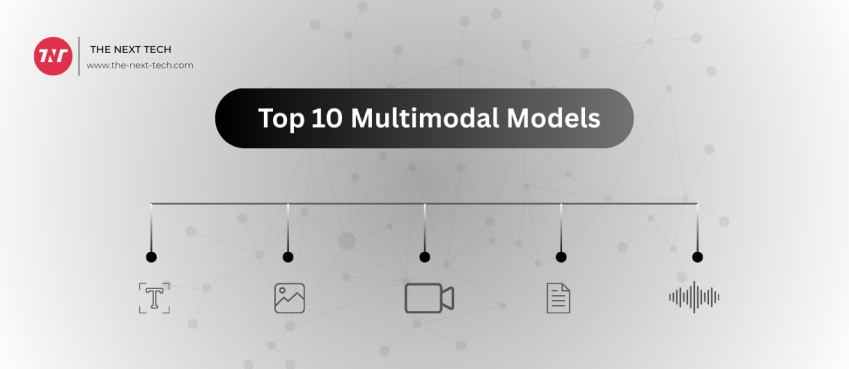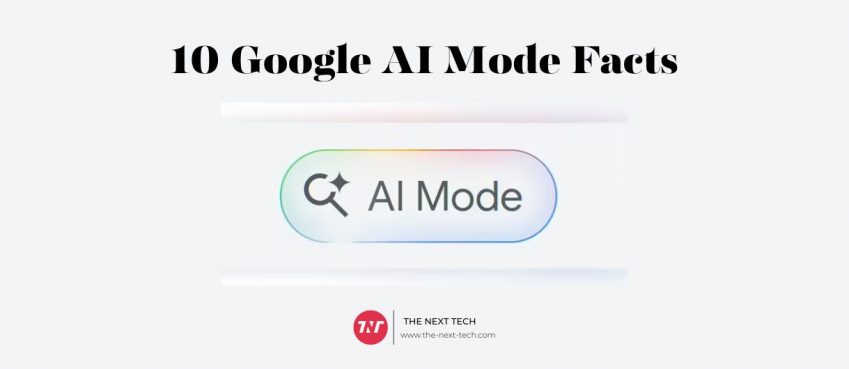
There are many tools and skills available to learn and master in today’s rapidly changing world. Business Information and Intelligence are two of the most important business skills in this digital and data-driven age.
These days, business intelligence can be considered an important organizational skill. BI can help organizations propel their businesses ahead of their competition by increasing brand awareness, employee engagement, and profitability.
Moreover, companies that use BI analytics are five times more likely to make swifter, more informed decisions. It is essential to increase Business Intelligence skills in this case. This story will list the most popular BI tools in 2021. There are many BI tools available today, but I have listed the top ten most used in 2021.
1. Google Data Studio

Google Data Studio was launched in 2016 and is a free web-based, web-based tool. However, Google’s intuitive, user-friendly design to provide business intelligence maybe its greatest selling point.
Pros: This tool works great with data from Google such as Google Analytics, Search Console, and YouTube analytics. A Google Sheet can be used to pull any data you need.
Cons: It is not very helpful to have a large number of pre-built connectors that can be used to retrieve data from other sources. It is not easy to work with many data types.
Data Studio has a lot of analysis and visualization options, which is a big advantage over other analytics suites. Data Studio is entirely web-based, which can be a drawback. If you are willing to share, it is simple. However, you will not be able to export to pdf or other common formats. Automated report delivery is also limited.
What sells Google Data Studio?
- Data Studio offers many third-party connectors that allow you to connect and pull data from such sites as Amazon Seller, Stripe, or Facebook Ads.
- Google Data Studio is completely free
- Real-time analytics and filtering
- Easy sharing & collaboration
2. IBM Cognos Analytics

IBM’s most important business intelligence suite, Cognos Analytics, is a cloud-based analytics and BI platform.
Cognos Analytics can import data from many sources to create interactive dashboards, visualizations, and reports. The users range from small businesses to large enterprises, from multiple industries, and all sizes.
IBM describes Cognos Analytics to be an AI-infused decision-making tool. This platform has a unique feature: you can view charts and receive notifications. You also get real-time updates.
Also read: How To Stream On Twitch? Twitch Streaming Guide For Streamers, Gamers, and Fans! (2024 Updated)
What sells Cognos Analytics?
- Easy team sharing via email, web, and Slack
- Storytelling with data in a variety of formats
- You can install and have access to the cloud or on-premise
- Dashboards & reports on shares via email, webpage, or Slack
- Machine learning is used to combine and assess related sources
- Interactive dashboards, visualizations, and reports using AI recommendations.
3. Looker

I didn’t know Looker was a BI tool until I found three full-time positions for Data Analysts at Disney, Warner Media, and a local startup that required proficiency in Looker. It had to be on my list of BI tools I needed to know when I first looked at Looker.
Looker is a browser-based platform for business intelligence. It’s simple to use, customizable, and easy to customize. You can also create interactive visualizations with a variety of graphs and charts. There are many similarities between Tableau and Looker.
Looker’s best feature is its drag-and-drop dashboard creation. This would be of great benefit to non-technical users. You can access visualizations and reports on any device. They can also be exported from the Looker dashboard to facilitate collaboration with other users.
What sells Looker?
- Connects to a user SQL database, or another data warehouse
- Offers a proprietary LookML syntax to optimize query results
- Real-time visualizations are available on all devices
- Drag and drop functionality for creating dashboards
- Access on the web and mobile devices
- Installations in-house or in a Looker cloud
- Allows you to export visualizations to collaborate with
4. Microsoft Power BI

Microsoft’s most popular offering in business intelligence tools, Power BI is intended to be used by business analysts and data scientists.
When I was interning at Larsen & Toubro in 2017, I came across Power BI. Power BI is used to analyze revenue expenses across departments, employee efficiency, real-time data-processing for welding and arching shifts.
PowerBI is easy to use and has a drag-and-drop interface. This gives users of MS Excel a feeling of familiarity or resemblance. Power BI is a platform that doesn’t require any programming. This is probably why it has been so popular. PowerBI offers a wide range of connectors that can be used to connect with Azure.
The Microsoft blog on Why Power BI explains very clearly and justifies why PowerBI is a de facto to Data Scientists. Power BI connects easily too, models, and visualizes data. It creates memorable reports customized with brand KPIs.
My personal experience with PowerBI is that it tends to slow down on large data sets. If your data is very large, you might want to consider other options.
What sells PowerBI?
- Offers web-based business intelligence, specializing in analytics
- There are three options for the platform: Power BI, Power BI Pro, and Power BI Premium
- All data sources are collected, connected, and stored, whether on-premises or in the cloud.
- As the company grows, it allows for more extensive suite products.
- Real-time visualizations are available on all devices
- Allows you to export reports and share them with others
- Solutions for all sizes of enterprises in different industries
5. Qlik and QlikSense
 QlikView can be thought of as line charts, pie charts, pivot tables, and bar charts. It is widely used in all domains of the industry.
QlikView can be thought of as line charts, pie charts, pivot tables, and bar charts. It is widely used in all domains of the industry.
QlikView is again a Business Intelligence cum Data Discovery tool. The goal is to create guided analytical applications and dashboards for specific business challenges. This software allows users to discover data insights and relationships across multiple variables.
QlikView has received a lot of controversy over its popularity. QlikView is a more affordable alternative to Tableau, which has large brands. It uses an in-memory model that can manipulate huge data sets with precision.
What sells Qlik?
- Access on-premise, cloud mobile, and website services
- It provides a single interface to gather and manipulate data
- Assists users with AI-driven suggestions for creating analytics
- Interactive reports and visualizations created with click-and-go
- Apps and analytics centralized to facilitate collaboration
- Advanced analytics calculations can be done with R and Python
6. SAP HANA

SAP HANA (High-Performance Analytic Appliance) is an RDBMS that was developed by SAP. It is primarily used as a database server to store and retrieve data for applications that require it.
SAP HANA is an ETL-based replication that uses SAP Data Services to migrate data to SAP from non-SAP sources to target the HANA database. SAP HANA is used by SAP-based businesses to process large amounts of real-time data quickly.
SAP is a closed-source environment so HANA may not be an option for data scientists, but HANA can be useful for businesses and careers in SAP.
Also read: Does Chunking In NLP Exist In 2025? Or Is It Overtaken By Modern LLMs?
What sells SAP HANA?
- Real-time updates on BI trends
- A high-speed database in memory that allows for fast transactional and analytic processing
- Connected to SAP Business Objects BI Solutions for insights and analysis
- Access to third-party applications via SQL and SAP ERP interfaces
- BI Self-Service Analytics
7. SAS
SAS, like R, is a tool for complex statistical operations and advanced data analysis. SAS is a proprietary closed-source tool that allows complex modeling to be performed. SAS is a highly reliable tool that professionals and large organizations use.
SAS isn’t a tool that is best for data scientists who aren’t experts, but SAS can be used to help you get started.
SAS is the undisputed market leader for enterprise analytics. However, SAS’s capabilities may not be as impressive as R or Python. SAS can be difficult to model and visualize data. The learning curve can be difficult and sometimes frustrating for large corporations with big budgets.
What sells SAS?
- The Access to data from more than 60 data sources – RDBMS files, PC files, Hadoop, and Amazon Redshift – with one SAS Business Analytics license
- An interactive, self-service interface that allows you to profile, clean, and blend data.
- Allows for full integration with the analytics pipeline
- Integrates self-service data discovery, reporting, and world-class analytics in one place
- Access to advanced analytics capabilities without the need for coding: correlation, forecasting and decision trees, text analytics, and many more
- name
- Strong Data Analysis skills for insights and analytics
8. Tableau

Tableau is a popular data visualization tool that can be used for Business Intelligence. Tableau makes data analytics fast and reliable. Tableau’s visualization dashboards and worksheets make it easy to simplify raw data and clean up data.
Big companies like Verizon, Charles Schwab, and Coca-Cola have been using Tableau for a long time to make informed decisions. Anyone interested in Data Science and Data Analytics careers should have a Tableau tool.
What sells Tableau?
- Large range of features and clients
- Offers business intelligence solutions that can be used on-premise, publicly, or fully hosted
- Installs on-premise, public cloud, Tableau cloud
- Access on the web and mobile devices
- Provides self-service, intuitive analytics that users can use without any technical knowledge
- Integrates data from multiple sources, both on-premise, and cloud-based
- In just a few clicks, you can create real-time visualizations
9. TIBCO Spotfire

Spotfire, a business intelligence company based out of Somerville in Massachusetts was acquired by TIBCO (Wikipedia) in 2007. Spotfire has the same general visualization capabilities that Tableau and QlikView.
Tableau Public and Power BI Desktop are free to use. However, TIBCO Spotfire pricing is $650.00 per user per year. Independent Data Scientists might not like the fact that there is no free version. This story is about how Accor Hotels used TIBCO Spitfire to improve customer experience and integrate faster, easier, and simpler.
TIBCO was an original global leader in analytics and integration. Spotfire was also in the kitty. You can visit the TIBCO customer list here.
Also read: 12 BEST Vocabulary Apps For Adults In 2024
What sells TIBCO Spotfire?
- Large range of visualizations (around 16 options)
- Mobile browser access allows you to build, deploy, and share analytics apps
- The Recommendations Wizard automatically creates visualizations
- Gain predictive insights using statistical/regression models
- Get instant analytics using real-time industry data.
- Spotfire Cloud offers 250GB of centralized storage
10. Zoho Analytics

Zoho is a web-based online workplace that offers Zoho Analytics, a self-service platform for business intelligence. It’s a cloud-based platform that can also be installed on-site. Zoho can connect to many sources to collect data. Zoho can automatically merge data from popular business software and via Zoho’s self-service tools. The data is kept in the US data center.
Zoho Analytics is home to 500 000 businesses, approximately 2M users and 50M reports. My research revealed that Zoho Analytics has the most extensive 3rd-party connectors — 500+ integrations for business apps. This tool is worth a look at.
What sells Zoho Analytics?
- Access to mobile, on-premise and cloud services
- Minimum expertise required
- Automatic synchronization of data from multiple sources.
- Drag and drop tool to create dashboards, visualizations, and reports
- Dashboards and reports on shares are available through the web page or app
- Facilitates collaboration
This is it for my blog. We appreciate your time! I hope you found this helpful. Let me know which BI tool is most important to you.
Daniel Abbott
Daniel Abbott is editor in chief & research analyst at The Next Tech. He is deeply interested in the moral ramifications of new technologies and believes in leveraging the data scientist, research and content enhancement to help build a better world for everyone.
Related Posts
Top 10
Top 10 Deep Learning Multimodal Models & Their Uses
By: Bharat Kumar, Tue August 12, 2025
The very first multimodal model seen in 1997 by IBM ViaVoice that capable to..
Top 10
10 Google AI Mode Facts That Every SEOs Should Know (And Wha...
By: Bharat Kumar, Fri July 4, 2025
After the release of AI Overviews, Google recently launched “AI Mode” in..
Top 10
Top 10 visionOS 26 Features & Announcement (With Video)
By: Bharat Kumar, Thu June 12, 2025
In summary: The visionOS 26 features photorealistic personas, spatial scenes,..
Top 10
Top 10 Veo 3 AI Video Generators in 2025 (Compared & Te...
By: Bharat Kumar, Tue June 10, 2025
Veo 3 AI videos are everywhere! Whether on social media, filming sector, and..
Top 10
Top 10 AI GPUs That Can Increase Work Productivity By 30% (W...
By: Bharat Kumar, Wed May 28, 2025
Entities such as Industrial Automation, Chip Design, Computer Vision, and Cloud..
Top 10
[10 BEST] AI Influencer Generator Apps Trending Right Now
By: Bharat Kumar, Mon March 17, 2025
AI models aka generative AI is getting stronger day by day. By far, examples..
Copyright © 2018 – The Next Tech. All Rights Reserved.








